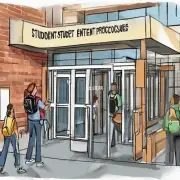他们如何处理学生的成绩和评价?
邵怡
治好病的不是药物而是时间。
Answer:
Student Grade and Evaluation Handling Process
1. Data Collection and Storage:
- Teachers and instructors collect and store students' grades and evaluations throughout the semester.
- These records may be stored electronically in a student information system (SIS), on paper forms, or in physical folders.
2. Grading Criteria:
- Teachers establish clear grading criteria for each course or subject.
- These criteria should outline the expectations for each assignment, test, and project.
- Grades are assigned based on the student's performance relative to the established criteria.
3. Point Calculation:
- Teachers calculate the total points earned by students for each assignment, test, and project.
- Points are typically awarded for completed assignments, exams, quizzes, and other academic activities.
4. Grade Compilation:
- Once all grades have been calculated, teachers compile the student's grades for each course.
- This may be done manually or using a grading software tool.
5. Evaluation and Feedback:
- Teachers provide students with feedback on their performance throughout the semester.
- This feedback may be in the form of written comments, conferences, or other means.
6. Communication and Reporting:
- Teachers communicate students' grades and evaluations to parents or guardians through regular reports, conferences, or online platforms.
- These reports may include both numerical and descriptive data.
7. Retention and Graduation:
- Teachers may use students' grades and evaluations to identify students who may need additional support or resources.
- They may also use this information to make recommendations for retention or graduation.
8. Data Analysis and Improvement:
- Teachers and administrators analyze student data to identify areas where students excel or struggle.
- This data can be used to make improvements to teaching practices, curriculum, and student support services.
Additional Considerations:
- Accommodations: Teachers may provide accommodations to students with disabilities or learning differences.
- Collaboration: Teachers may work with other instructors, counselors, or support staff to provide students with additional support.
-
Transparency: Teachers should be transparent about their grading practices and communicate expectations to students and parents.





